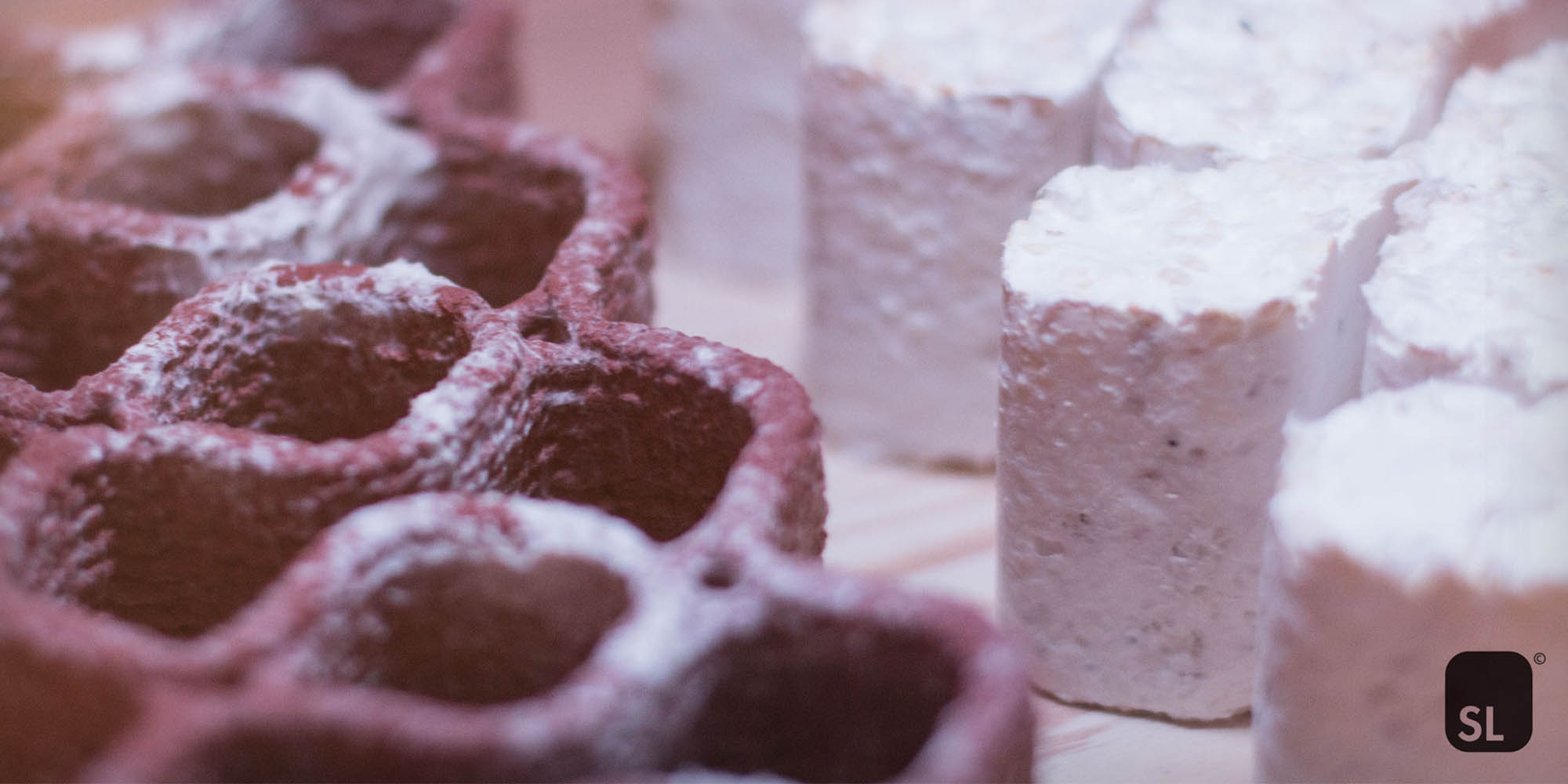In the project “MyCera” (Mycelium and Ceramics), a composite material made from clay, organic substrate and mycelium is developed. 3D printing allows complex and lightweight brick-like shapes that would not be possible with conventional extrusion processes.
The hollow chambers are filled with a mixture of organic substrate and mycelium, the vegetative part of fungi. The living material increases tensile strength of the printed objects and allows them to be bio-welded. There is no need for mortar, which has a high level of CO2 pollution due to its high cement content and energy-intensive manufacturing process. The combination of the building material clay, which has been used for thousands of years, the renewable biomaterial mycelium and digital manufacturing methods make it possible to manufacture high-performance and versatile – here static and heat-insulating at the same time – ceramic components that gradually allow a substitution of cement-based binders in the construction process.
Credits:
Julian Jauk, Hana Vašatko, Lukas Gosch, Milena Stavric, Institut für Architektur und Medien, Technische Universität Graz
SFB-Projekt „Advanced Computational Design“. Diese Arbeit wurde durch den Österreichischen Wissenschaftsfonds (FWF) finanziert, Projekt Nr. F77.
